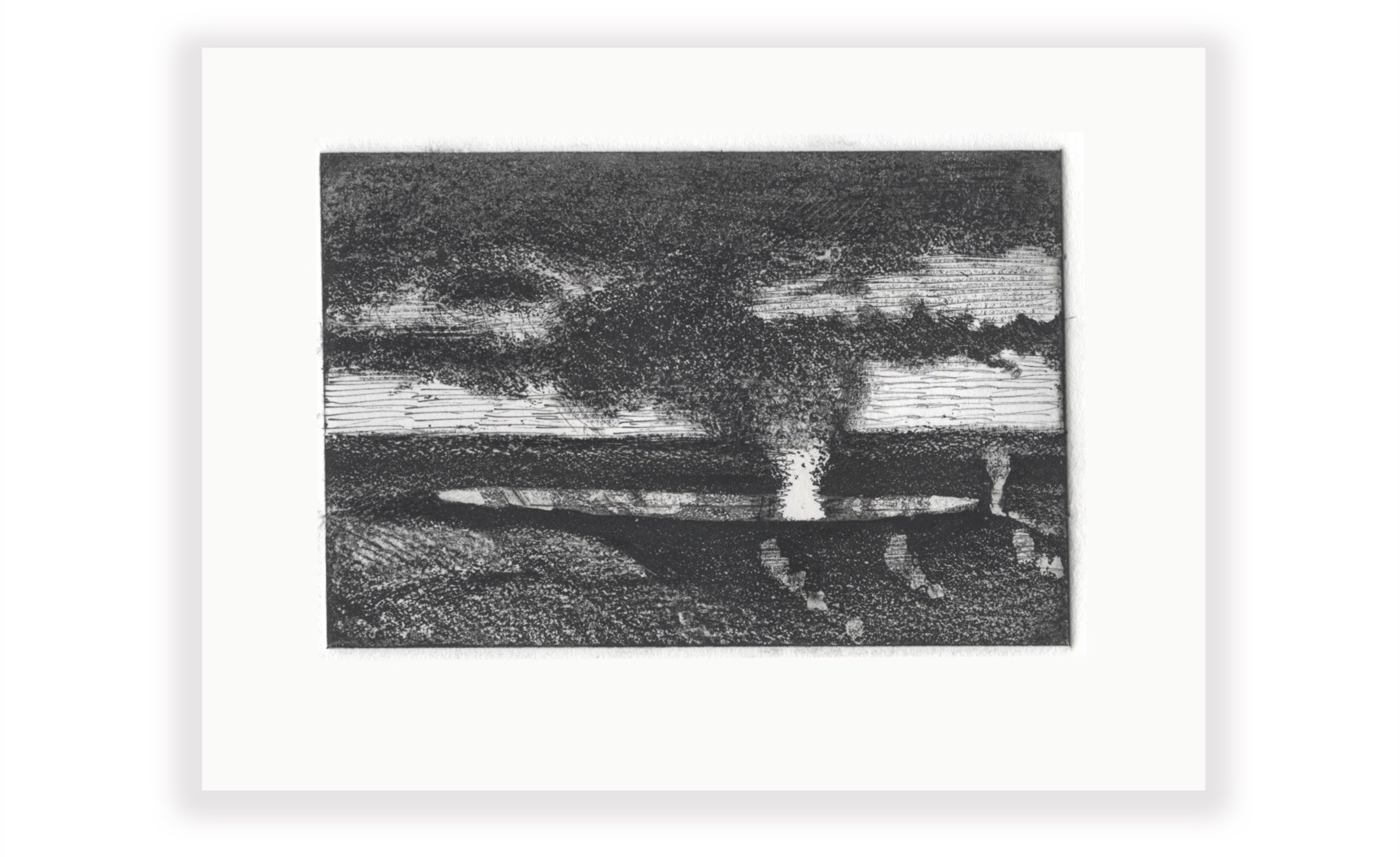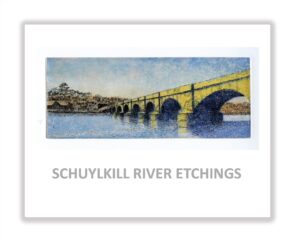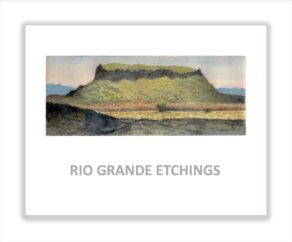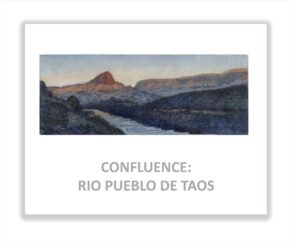INTAGLIO PRINTS
Intaglio prints, popularly known as etchings—are works of art created by the transfer of ink captured in metal-plate incisions created by chemical or mechanical means, including drypoint. The term “intaglio” comes from the Italian intagliare (“to carve”). Drawing with an etching-needle through a corrosion-resistant “ground” such as asphaltum, or engraving directly into the plate with a burin, or pitting the surface with aquatint, tiny reservoirs are created. Ink is rubbed into these in-cuts. The surface is wiped clean before the plate is covered with moist paper. Covered with felt blankets and run together through a roller-press, the intense pressure forces the paper into the plate-incisions. Pulling the paper away from the plate reveals the transferred image. The first successful impression of the completed image is known as the “B.A.T.” bon à tirer, or “good to pull,” clearing the way for the production of a numbered edition. As a soft metal, copper is easier to manipulate. Because it also degrades rapidly, print editions might be limited to 25, or 50 at most. Steel engravings might support editions numbering in the hundreds.
Below: Halema’uma’u Crater, Kilauea. Etching with aquatint. Test plate. 3 x 4 inches. 2015

COPPERPLATE ETCHINGS
Working with Philadelphia master printer Cindi Royce Ettinger, a new method for producing hand-colored prints was developed. Watercolors of pictured subjects were transformed into digital prints on rice-paper, which was integrated into copperplate intaglio prints as Chine-collé. Final impressions are hand-embellished, or “curated” in printer-speak. These works and others are available from Needlewatcher Editions, and Gerald Peters Gallery in Santa Fe, NM. Contact: Maria Hajic. mhajic@gpgallery.com


